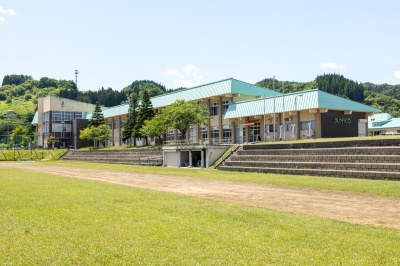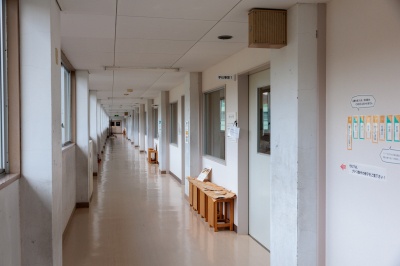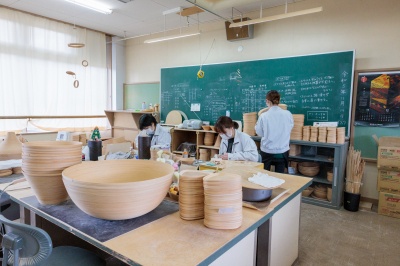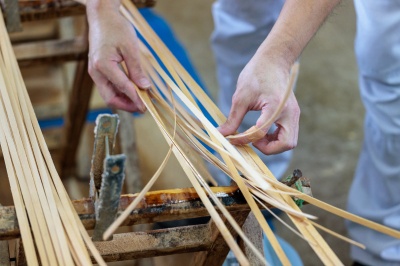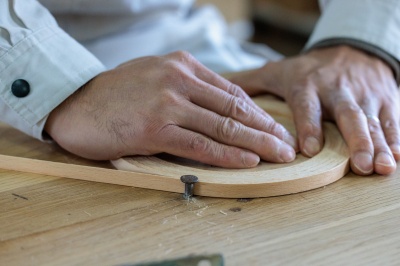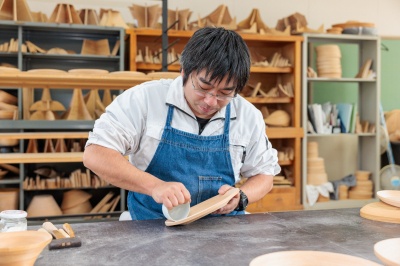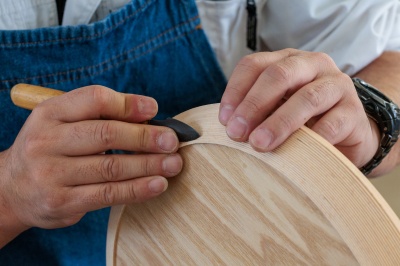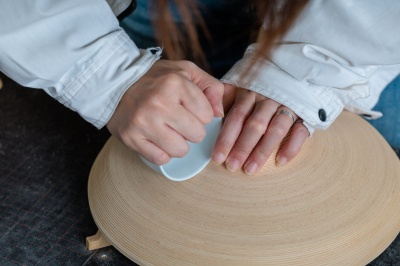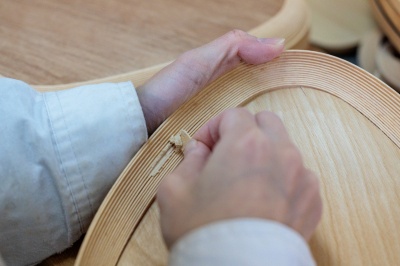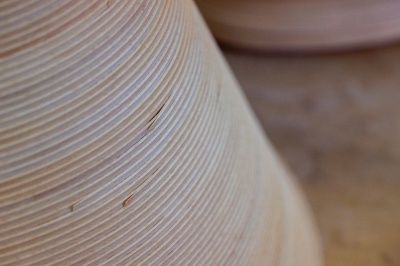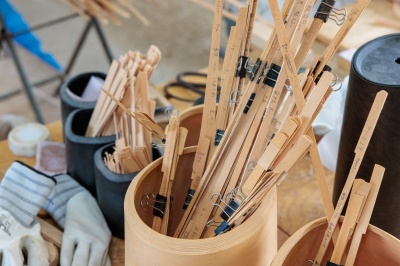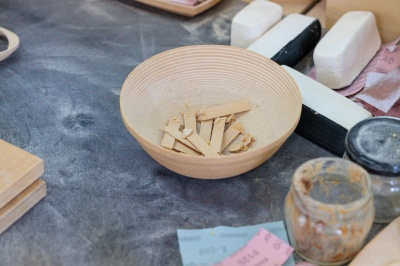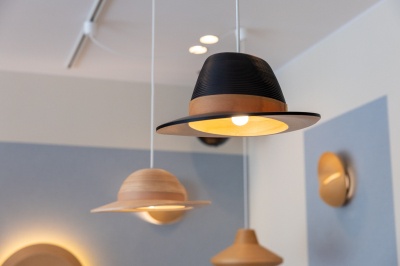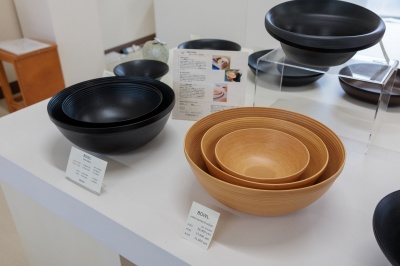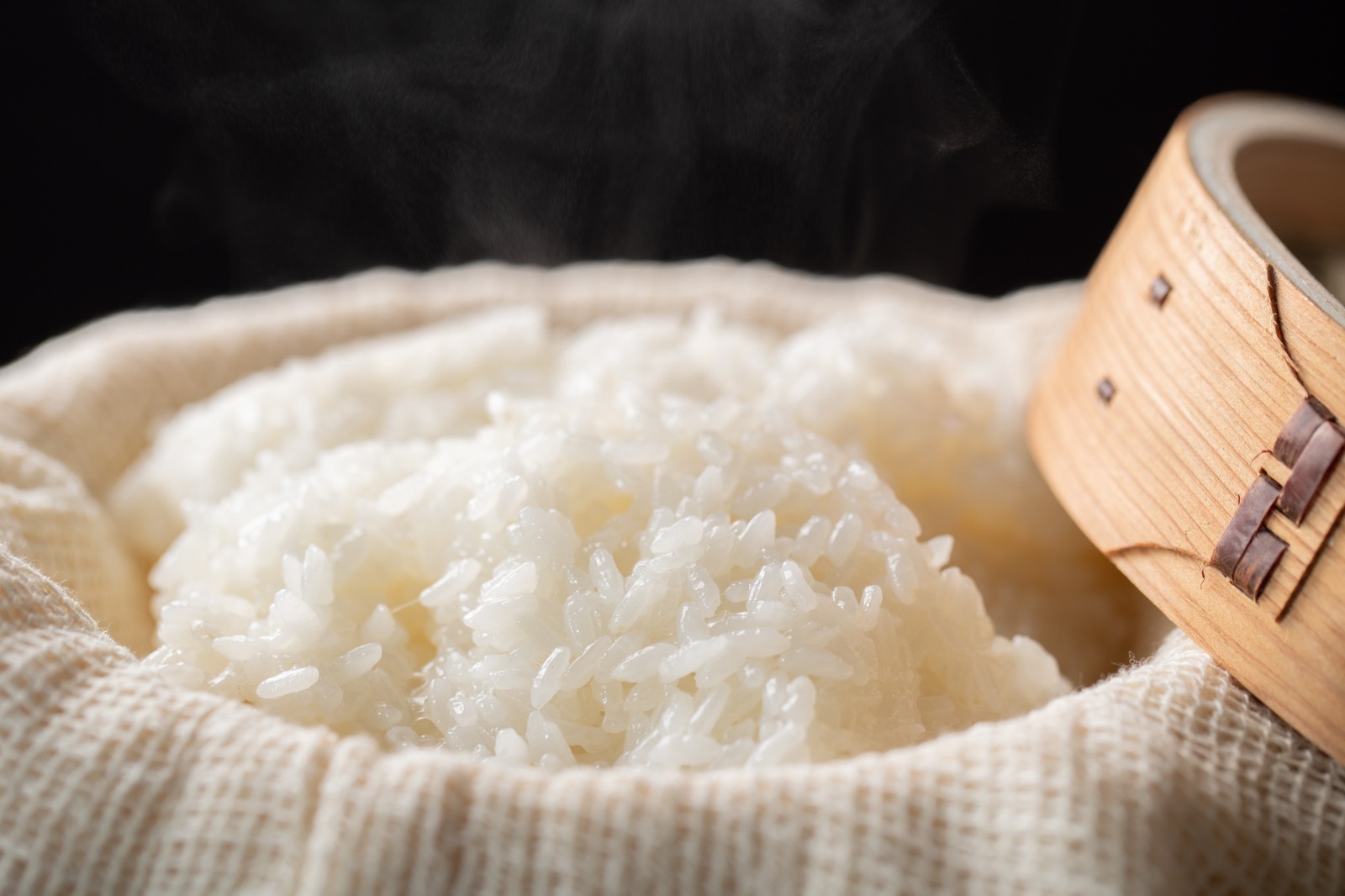The charms of Bunaco products that showcase artisans’ handcrafted work:
Lightweight, durable, and highly functional traditional crafts
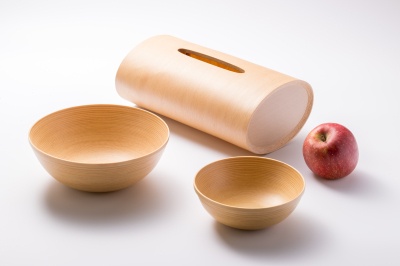
Bunaco wooden products are made from domestic beech wood (buna in Japanese). These traditional crafts from Aomori Prefecture receive high acclaim from around the world. Here is an introduction to the charms of Bunaco.
Bunaco traditional crafts are made from beech wood
Aomori Prefecture boasts the largest number of beech trees in Japan. The Aomori traditional craft Bunaco was developed to make effective use of the beech trees. The manufacturing base for Bunaco products is the BUNACO Nishimeya Factory, which is located in mountainous Shirakami-Sanchi, a natural World Heritage site. The factory was renovated from a vacant elementary school building, and vestiges of the school can still be seen around the site.
The Nishimeya Factory mainly carries out the entire manufacturing process of Bunaco products, from shaping to polishing them. About 10 artisans work in each room of the factory on the various steps of the process.
Bunaco products are filled with attention to detail
Bunaco products are made using a unique manufacturing process in which beech wood is rolled into thin tape-like strips about one millimeter thick and one centimeter wide, which are then pressed and shaped. The entire process, from winding, shaping, polishing, to coating, is performed by artisans working by hand on each step.
The first step is winding, in which beech wood processed into strips is wound around a disk-shaped wooden board until it reaches a certain size. The strips are wound around the board tightly with force and secured with clips or rubber bands. Glue is basically applied only to the front and end parts of the strips. It is difficult to wind small parts and oval shapes at a sharp angle, but this is done by taking advantage of the characteristics of beech wood, which is flexible due to its high moisture content, and is durable and resists breaking when bent.
If the strips are wound too loosely, they will come undone in the shaping process which comes next. Thus, the winding step is important work that forms the foundation of Bunaco products.
Next is the shaping process, which determines the finished form of the Bunaco products. The flat wound strips, which resemble a Baumkuchen cake, are pressed out to form a three-dimensional shape. The rough shape is formed using a teacup, and the more detailed parts are shaped using original tools such as spatulas and rods.
What makes Bunaco so charming yet so difficult is that even if items are the same at the winding stage, they become completely different products depending on the shaping stage.
Each product has its own “mold” made of braided wood, but the experience and sensitivity of the artisans are all-important, as they must use their own sensitivity to finish the smallest details to have high quality, such as beautifully arranging the form and evenly spacing each beech wood strip.
It takes years for artisans to acquire this sensitivity, because if force is not applied evenly, the items will be distorted and their shape will change drastically. In the old days, artisans used to look for a teacup that felt comfortable in their hands and used it as a tool.
Shifting the wound beech wood one step at a time requires strength and meticulous attention to detail. The shaping work becomes more difficult and time-consuming the larger the wood pieces are. After this, glue is applied to both the inside and outside surfaces of the Bunaco and allowed to dry for half a day, and the product finally takes its finished form.
Polishing and hole filling are conducted after the gluing is complete. The joints and holes that form between the wound beech wood strips are filled one by one. The holes are filled with putty, which is a mixture of glue and wood dust from other processes. Bunaco products include tableware such as vessels, which cannot function if there are holes in them, so filling holes is important work that has a significant impact on product performance.
After this step, the products are polished and coated repeatedly, and ultimately finished with a final coating. This work is all done by hand, with the artisans performing checks with their own eyes and hands. The unique texture of Bunaco, which is pleasant to the touch, is born from the careful handiwork of artisans.
Bunaco products are lightweight and easy to handle, making them highly valued for interior décor and lighting
The manufacturing process for Bunaco is not an easy one, requiring skilled techniques and patience for each step. The value of Bunaco products lies in the fact that they can only be completed by human hands, with each step performed by human hands without cutting corners. The wisdom and techniques of craftsmanship that have been passed down from artisan to artisan support Bunaco products.
For example, beech strips are used to make the rulers that measure the width during the winding step, and for the spatulas used to apply putty. Bunaco is made from familiar materials and manufactured using a method that does not waste resources, making it ideal for modern society, which places great importance on being eco-friendly and sustainable.
Bunaco features sophisticated and simple designs, yet is lightweight, durable, and easy to use. The excellent design sense and quality of the products have been highly evaluated, and they have won several global awards, including the Good Design Award. The warmth and curves of the wood products blend well with any interior décor, and are beloved by people all over the world.
Bunaco products are commercialized and sold as tableware such as vessels, trays, and small plates, as well as interior décor goods, lamps, speakers, and a variety of other products. The ideas of artisans who love making things are reflected in the development of various Bunaco products on a daily basis.
Bunaco traditional crafts consolidate the best aspects of woodworking. Why don’t you try enriching your daily life by incorporating Aomori’s unique woodwork products, which were created to make the most of local wood?
